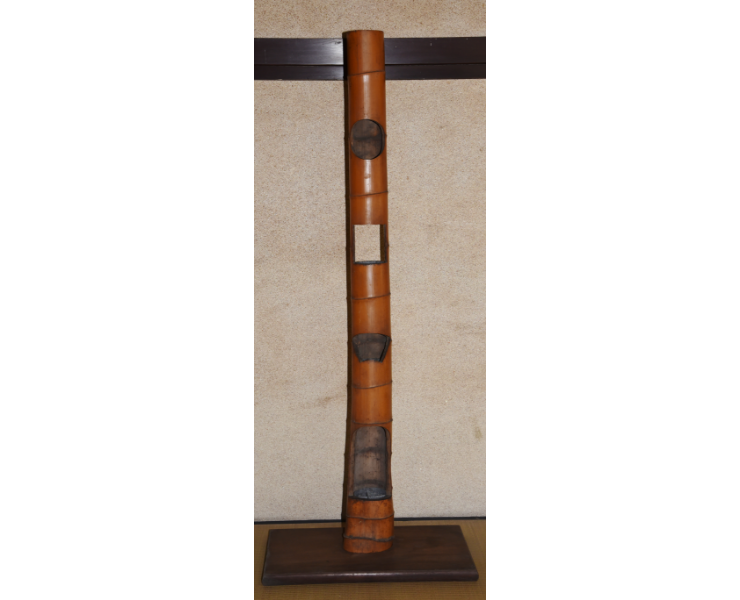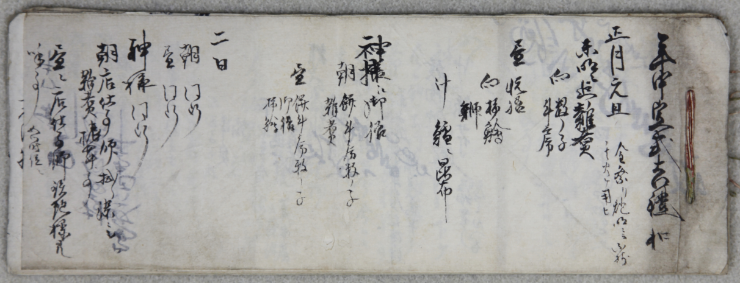Daily life and culture

 Inoue Sekiemon Munetsugu’s favorite flower vase
Inoue Sekiemon Munetsugu’s favorite flower vaseAnnual family event memorandum
Daily life and culture of Inoue Sekiemon family
From the final years of the Tokugawa shogunate government (1603-1868; Edo period) to 1892 in the Meiji period, specifically 1892, the Inoue Sekiemon family kept records of annual events. These records provide a glimpse into the daily life and culture of the family.On the first day of the New Year, festive dishes were served to the family members after holding a metal-related event. On the second day, these dishes were also served to servants living in the house and subcontracted craftsmen making matchlock components. Annual events such as First Horse Day, Girls' Festival, the Buddha's Birthday, and Boys' Festival, as well as events relating to craftsmen who used fire, such as the November Bellows Festival, were woven into daily life.
Family members also practiced such aspects of culture as the tea ceremony, flower arrangement, painting, and waka poetry.
The family had frequent contact with cultured samurai (warriors) through matchlock firearms transactions, and familiarity with these aspects of culture was essential for smooth customer relations.
For example, Inoue Sekiemon Munetsugu (1795-1825), the 10th head of the family, was fond of a bamboo vase over 180 cm tall, while Inoue Sekiemon Hisatsugu (1824-1908), the 11th head and the last gunsmith in the country, was a devotee of Japanese poetry and possessed a certificate in jujutsu.